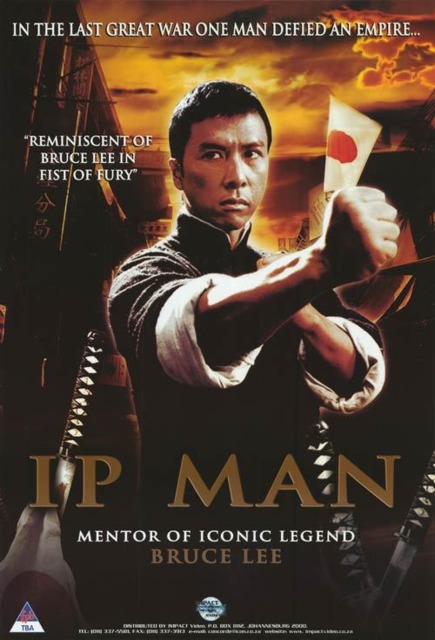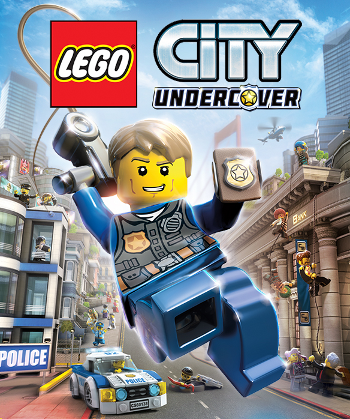Recently, after accruing several of them over the past few months, I've been considering the pros and cons of "evergames": a goofy appellation for games which are built in such a way to be effectively endless. Or, as is more often the case, games you play until you decide you're done with them, rather than them showing you the door or dropping the curtain with some sort of conclusive end-game state. It's a weird quality to nail down, because no game developer wants to build a game that feels transitory, even when they have sequels in the works that they'd rather their audience play instead. Plus, there are so many genres that embody the idea of an effectively endless game - fighters, flight sims, space trading sims, online shooters, sports games, party games, survival crafting, roguelikes/lites - that creating a term for them seems almost redundant. It'd make as much sense to create a collective term for all the games that do have an ending.

For the sake of clarity, I'm going to use the term to refer to those games that are built with a traditional framework that allows for a beginning, middle and end, but aren't quite so insistent on the third part of that trio. Stardew Valley and Terraria - both games I value highly - fit into this specific evergame frame: you start with little, build ever upwards until you've mastered every discipline or defeated every boss, and yet these games will offer every reason to keep playing. If they have an end state, it's what the player themselves determines as a place to call it a day.
Generally, as someone who has mildly obsessive playing habits - I've spoken to this before now, but I essentially start great games loving them in a sort of highly immersive euphoric state, which slowly diminishes into tolerating them as I complete more of their busywork side-content and edge closer to its end game, and then feel a great surge of satisfaction in reaching 100% completion or an equivalent - I've mostly steered clear of evergames. It's why I also skip MMORPGs and DLC campaigns for the most part: I like having some clear goalposts to move towards and reach, and pushing them ever back with injections of new content is tantamount to torturous. All the same, I've developed an appreciation for evergames this year almost in spite of myself. From gradually chipping away at the many trophies, challenges and collectibles of Super Smash Bros. for Wii U, to taking on the multitudinous activities of Starbound and recapturing my verve for 4X strategy games with last week's Indie Game of the Week (well, Indie-ish) Endless Legend, I've come to accept that there's a place in my gaming schedule for these regular stops between wherever else my gaming habits will take me.
That said, I am definitely looking forward to chipping away at more of my backlog and perhaps even trying some significant 2018 games in the final four months of the year. Before we get into any of that, however, a quick recap of the week's blogging:
- The Indie Game of the Week was Volgarr the Viking, a game I sort of expected I wouldn't like but had to know for sure. Volgarr's well-known in these parts for its Breaking Brad feature, which in addition to being an entertaining slog for poor old Bradley was also all the instruction one could ever need to overcome Volgarr's level design and various challenges. Even as dramatically exasperated for the cameras as Brad may have been, however, I share his pain with regards to the unnecessary wide berths between checkpoints. It's a game built around memorization and near-perfect execution, not unlike a rhythm game almost, but there's something about that degree of repetition that I no longer find palatable. I'm glad games have moved on, or at the very least offer highly difficult challenges as their focal points with less of a chore required to reach them, even if there's still a lot about Volgarr that's commendable.
- We also check in on the Sega Mega Drive with the final (for now) Mega Archive entry. Mega Archive: Part VI sees us clear of the system's formative year of 1990, marking an ideal place to shut down the feature temporarily before moving onto the even greater heights of 1991. Japan saw a deluge of shoot 'em ups during the busy month of December '90 - about half the list of the eighteen covered in part six were vertical, horizontal, or top-down shooters of some variation. There was also Trampoline Terror!, which felt like a NES game but not necessarily in a bad way; Wonder Boy III: Monster Lair, the last of the "arcade" Wonder Boys that - figures - also saw the new-to-the-series inclusion of shoot 'em up levels; Cutie Suzuki no Ringside Angel, the system's first wrestling game; Accolade's unlicensed Ishido: The Way of Stones that includes a synopsis on the history behind its audacious Genesis port; the legendary barbarian kusoge Sword of Sodan or, as I've never called it, "Sword of So Damn Bad"; and everyone's favorite kooky horror-themed platformer that's not-so-secretly a reskin of an anime license, Decap Attack.
Addenda
Movie: Ip Man (2008)

Back in the early 00s when I was regularly buying DVDs, I was sweeping up every martial arts and wuxia movie I could find. It helped that 2000's Crouching Tiger, Hidden Dragon was a big enough mainstream hit to be courting (and winning) Oscars, because it meant every distribution house was looking for the next big hit from Asia or plumbing the back catalogues of major Asian movie studios for something they could localize. As well as purchasing any Jackie Chan movie that became available, I remember investing heavily in a Criterion collection of sorts in the UK for violent movies from China, Korea and Japan - Tartan Asia Extreme - through which I was introduced to Kinji Fukasaku's Battle Royale, Wai-Keung Lau and Alan Mak's Infernal Affairs, Ryuhei Kitamura's Versus, Chan-wook Park's Old Boy and Vengeance trilogy, and a lot of Takashi Miike's early movies like Audition and Dead or Alive as well as any number of other eccentric (and messed up) action and horror movies from the region.
It was years after that period of my life grabbing DVDs by the dozens when the Ip Man series showed up, and I regret missing out on them for this long. Headlined by Donnie Yen as the eponymous Wing Chun master, Ip Man is a biopic concerning the instructor that would later teach Bruce Lee at his Wing Chun Athletic Association in Hong Kong years before the actor would go on to find fame and misfortune in the United States. Ip Man 1 in particular looks at Ip Man's tumultuous past before and concurrent with the Japanese occupation of China and his home city of Foshan during World War II. Breaking the movie into two parts was a smart move, starting with the lighthearted era of the mid-30s when Ip Man was an independently wealthy secret martial arts badass who got into scrapes with gossipers and a group of rude masters from Northern China, which then flowed into the more downbeat occupation era of 1937 during which China was forced to bow and scrape to their Japanese oppressors and suffered widespread economic depression and high casualty rates, with Foshan being no exception. The second half hits that much harder because we get used to seeing these characters in happier, prosperous times.
Obviously, the main draw to this movie for an uncultured swine like myself are the martial arts fight scenes. Donnie Yen demolishes opponents in every fight he's in, as is typical for the subject of a slightly fawning biopic, but the way he fights with Wing Chun - a graceful variant of Kung Fu - against friendly rivals like the fellow Foshan master Liu is a significant departure from the rage-fuelled encounter with ten Japanese soldiers in karate gis that becomes the movie's pivotal action scene. Throughout the movie, Ip Man is shown to be an endlessly patient man, but witnessing the Japanese soldiers' brutality and callousness just before that fight scene happens finally causes something inside him to snap, leading to a number of altercations with the soldiers as well as the realization that teaching students to defend themselves with Wing Chun is one of the few positive differences he can make in this miserable new era for China. Also, while I haven't been on board the Ip Man train long, I imagine the way he rolls up his sleeves just before getting serious will become a recurring character trademark in the movies to come.
In his excellent A History of Violence column for the AV Club in which he covers the best action movies year by year from 1968's Bullitt to the present (or 2017, when the column ended), Tom Breihan often took the time to check in with Donnie Yen's filmography. A charismatic actor in addition to a talented martial artist, Yen's had a long career that's often been overshadowed by the likes of Jackie Chan and Jet Li, but has since become appreciated for his many roles and fight scenes especially as the latter two have all but retired from action cinema as of writing. The column gave extra attention to 2005's Kill Zone (which I'm also intending to watch), but also praised Iron Monkey (which is one of the many martial arts movies I picked up on DVD) and the Ip Man trilogy, which I'd heard about for a long time but never got a chance to watch. After seeing the first Ip Man, I'm definitely inclined to catch the other two at a later date.
Game: LEGO City Undercover (Wii U, 2013)

Between a somewhat unpleasant month for personal reasons and a significant number of challenging, ongoing games, I was looking for something uncomplicated and lighthearted to relax with for a week. Traveller's Tales's LEGO games have always served their role well as puzzle-platformers with a genial sense of spoofy humor and fun, and I've found that LEGO City Undercover's scattershot movie references are far more enjoyable than the stringently franchise-specific goofs of the Star Wars or Indiana Jones LEGO games. There was that dark time, which is around the point I dropped off from these games, where they'd keep the original voices from whatever source they were parodying this week - Lord of the Rings was one of them, as was Harry Potter - and it felt like they were having less fun with the material and just going through the motions.
Speaking of repetition, these games have always had an issue regarding the lack of creativity from entry to entry; ironic, given that it's a cornerstone of the LEGO "interlocking brick toy" the games are based on. LEGO City Undercover, which was specifically built for the Wii U and its gamepad's touchpad and infrared hardware (which is why it took several years to show up elsewhere), adopts a new structure which balances the old "instance" levels - which, as always, require a standard story mode run and then a "free run" which allows you to use previously inaccessible characters with special abilities to sweep up the rest of the collectibles - with a large open-world full of incidental content by way of a Grand Theft Auto or any number of Ubisoft games from the past ten years. The titular Lego City is a massive place, full of districts which recall certain movie archetypes from the famous streets of San Francisco (including Lombard Street), a Chinatown district, a correctional facility on "Albatross Island" for protracted Shawshank Redemption goofs, "Apollo Island" where LEGO NASA stages their space exploration, and a forested area where I'm almost expecting to run into LEGO Jason Voorhees. Because almost all the loose overworld collectibles require certain unlocks - I recently acquired the astronaut disguise, which allows me to use teleporters - I'm holding off on indulging my collectathon habits until the story is complete and I've unlocked every ability I might need.
The enormous TT LEGO franchise best exemplifies the conceit of "absence makes the heart grow fonder". When I was renting games a decade ago back when Blockbuster Video was still a viable enterprise, I overindulged on LEGO games and dropped them for years. Now that I've put some space between the last one I played and this one, I've found that I'm enjoying revisiting the old formula more than I anticipated. It helps that LEGO CIty Undercover was one of the better regarded games in the series to come along in a while too, to the extent that almost every LEGO game since has adopted the same gigantic open overworld model. I'm also happy to have ticked off another game on the relatively short list of bangers that were Wii U exclusive (or at least in this case built specifically for the Wii U) even as Nintendo works to port every notable game from that system to the Switch and pretend the Wii U never happened. After this, I've only got one more significant Wii U exclusive lined up: Tokyo Mirage Sessions #FE (though I'm still on the fence about picking up Fatal Frame: Maiden of Black Water, Kirby and the Rainbow Curse, Paper Mario: Color Splash and The Wonderful 101). Dunno when I'll find the time to play it, but I'm happy to give this maligned console all the attention it deserved - albeit, long after it could've used it...
Log in to comment